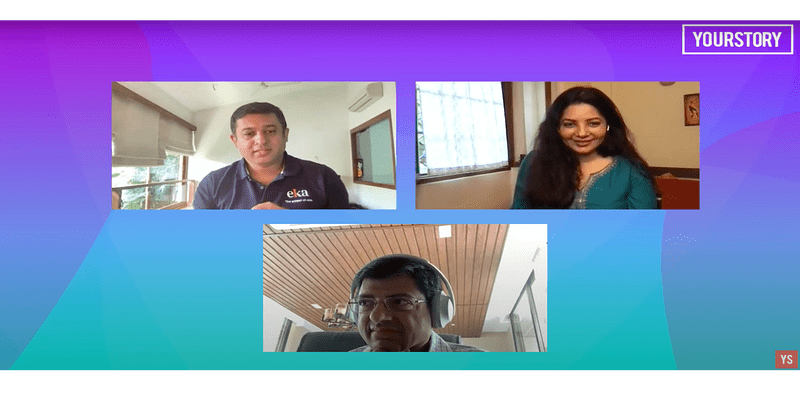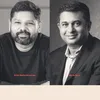India could be on the cusp of unlocking a $1 trillion opportunity for Software-as-a-Service (SaaS) companies, creating nearly half a million new jobs by 2030, according to a report titled 'Shaping India’s SaaS Landscape' by SaaSBOOMi, Asia’s largest community of SaaS founders and product builders, in association with McKinsey.
In a conversation with YourStory Founder and CEO Shradha Sharma, Manav Garg, Founder of Eka Software and Together Fund, and Noshir Kaka, Senior Partner at McKinsey, deep-dive into how Indian SaaS providers can scale to their full potential and win 4-6 percent of the global SaaS market.
To be clear, software accounts for 20 percent of the total enterprise spending on technology but has a value creation of nearly 50 percent. The SaaS industry, which is $2.6 billion in size and employs about 40,000 people, is expected to record a 20X revenue jump by 2030. The narrative goes beyond this mammoth opportunity.
This ‘20X jump’, which will generate $50 to $70 billion in revenue, is merely 6 percent of the global SaaS market —reflecting the untapped size of the pie and the huge window of opportunity that lies ahead for the SaaS industry.
A trillion-dollar SaaS opportunity: What is India’s right to win?
“Indian SaaS ecosystem can be worth a trillion dollars by 2030, which will be one of the biggest value creation opportunities that we are going to see in the decade ahead of us. It is touted to grow at a CAGR of 18 precent,” Noshir says.
This is coupled with the multiplier effect that will give rise to half a million jobs in India, boost forex reserves, economic activity, and so on. Having said that, what is India’s right to win over the Valley and upcoming markets like Estonia and Vietnam?
Exuding confidence, Manav lays out strengths that will play in India’s favour in tapping this trillion-dollar opportunity.
First is the shift to digital go-to-market (GTM), which the founder terms as the “Ramban” provided to the industry by the pandemic.
“We can kickstart the entire revenue engine from India. Earlier, we used to hire 50-60 people abroad for GMT, field sales and pre-sales, and other things. With digital GMT, the customer is open to talking on a Zoom call or a digital channel. You can do a handshake once in a quarter, maybe your senior sales person can go and meet them in the geography that will be required for enterprise-class businesses,” Manav says.
Second, SaaS is not a “winner-takes-it-all market”, which creates a tremendous opportunity to build multiple billion-dollar companies and grow in revenue.
“Look at Salesforce. Being the leader and innovator in the entire cloud category, it still has only 19.8 percent market share in the CRM. This shows that you can create far more billion=dollar companies in market cap and can continue to grow in revenue as you build your venture correctly,” Manav says.
Third is the ‘global’ nature of SaaS business, which allows entrepreneurs to build their business in a resilient fashion.
Tapping this opportunity, however, would need some “serious work” over the next nine years, especially on the talent side as the industry moves from employing 40,000 to 5 lakh people in SaaS, Manav underlines.
“It is talent, talent, and only talent. Every day we discuss how do we get access to talent or build the same,” he says.
New jobs, new skills & new (SaaS) curriculum
While the growing market will bring in job opportunities, it will also demand newer skill sets.
According to Noshir, there are three to four critical skill sets that the SaaS industry will be short of across the globe for the next 10 years as he categorises major opportunities in three areas—Horizontal SaaS, Vertical SaaS, and the developer tools market.
Emphasising the third opportunity, Noshir says, “SaaS targeted towards the developer community includes products and applications that actually help developers do their job better, write better code etc. We have one of the largest developer communities in the world (three million) and that could be as big an opportunity as any of the international ones.”
New jobs like product management, marketing, product engineering, product design, product operations, inside sales, SDR support professional, and others will be in demand. These are some of the opportunities one should really think of, because they’re going to be the mainstays of job creation for some time is a piece of advice that Noshir shares for students and young professionals.
However, building this ecosystem would require access to education infrastructure, the experts voice.
“The funding and skilling initiatives can come from the industry. What we can’t provide is access and infrastructure, which we need from the government. We need to build the required skill sets into existing programmes, so that the pipeline for the next generation of jobs can be filled,” Noshir says.
The expert pitches the idea of having a SaaS-based curriculum in colleges, especially MBA and engineering, along with skill sets inside sales and marketing operations.
This needs to be coupled with awareness, as the experts envision building a narrative on “why SaaS is such a big opportunity and how people can build long-term careers”.
“We can use a lot of digital technologies ourselves to train people. We have a good base of professionals who can come forward to take online classes from whichever territory of the world,” Noshir says.

No dearth of funding, bigger ‘seeds’
The bottleneck of funding has faded as investments worth $4 billion were made in the Indian SaaS ecosystem in the last five years. Rather, there is more money chasing fewer entrepreneurs than vice versa, Manav says.
Manav and Noshir give the example of Sequoia Surge, which has put 40 percent of its funds in SaaS-based startups, to validate the point.
Brushing up on new trends, the experts say, “More than capital, I'm glad investors have recognised that you can go to the market right at the time of seed funding itself. The seed rounds have gone bigger from 100, 250, 500K to an average of a million dollars within a few years. Some seed rounds with really good teams are going to $3 million, which is almost getting aligned to where the Valley is.”
What needs to come along with funding is operators’ help for entrepreneurs.
Besides seed rounds getting bigger and bolder, a lot of B2C entrepreneurs are showing interest in SaaS, says Manav as he talks about the Together Fund.
“We just started the fund and are seeing a very encouraging response. Around seven investments have been made and more will be announced in the upcoming week,” he says.
An average Indian SaaS startup is fundamentally under-investing in growth compared to its global peers, Noshir explains. As a result, they are unable to take off or dominate a segment.
“There is a growth playbook that we need to understand and invest behind. The market opportunity or funding are not a matter of concern but talent and how investment is made in GTM,” he says.
Building on the talent aspect, Manav says, “Foreign MNCs come and raid our talent. We will have to be very careful on that dimension because for the first time we are seeing global recognition that entire digital GTM can be built from India as well. Build in India has to happen so that the entrepreneurs are comfortable and stay.”
The pace picked up by SaaS in the last 12 months is “astounding”.
“Look at what DarwinBox, Chargebee, or Zenoti have done. It teaches most of us, who have been professionals for years, about how to actually work for the next generation or aspire to do things differently. It is an extremely exciting space and remember, we are only aspiring for 6 percent of the market and have merely scratched the surface,” Noshir says.
Emphasising on the advantage of ‘make in India for the world’, the experts sign off saying “If you have momentum, use it or lose it.”
Edited by Teja Lele Desai
Link : https://yourstory.com/2021/08/unlocking-indias-1-trillion-saas-opportunity-saasbhoomi-mckinsey
Author :- Naina Sood ( )
August 16, 2021 at 05:15AM
YourStory


